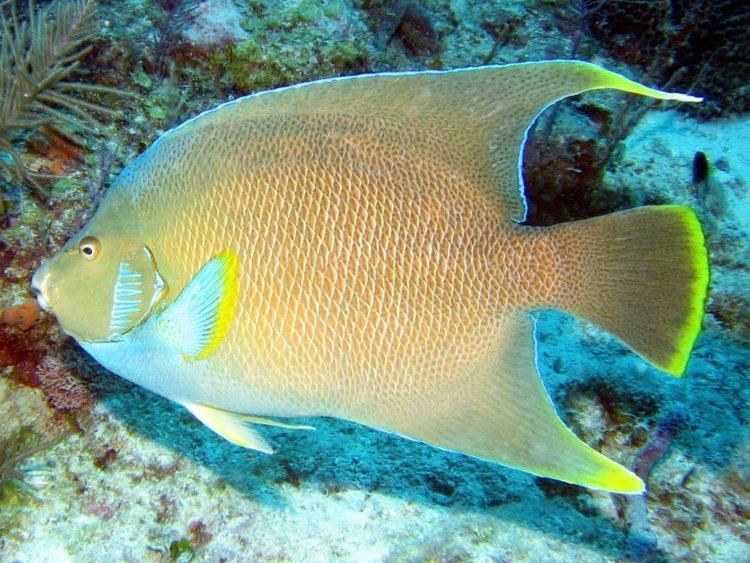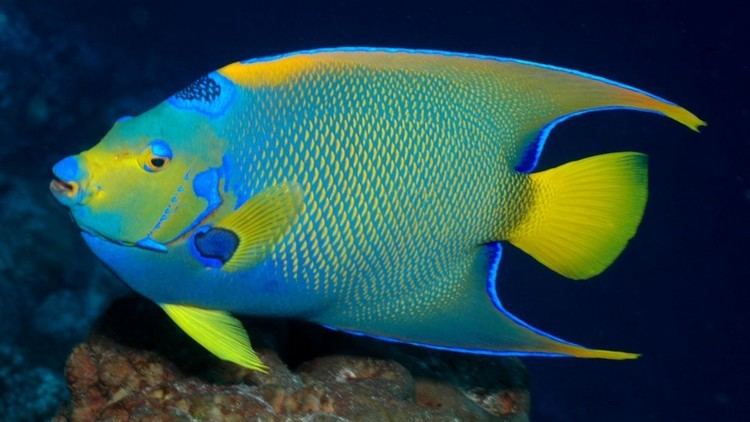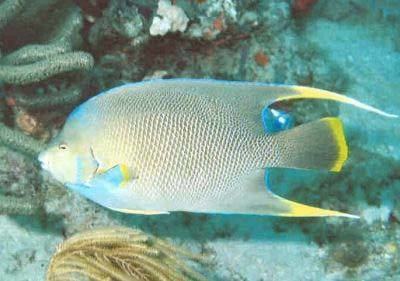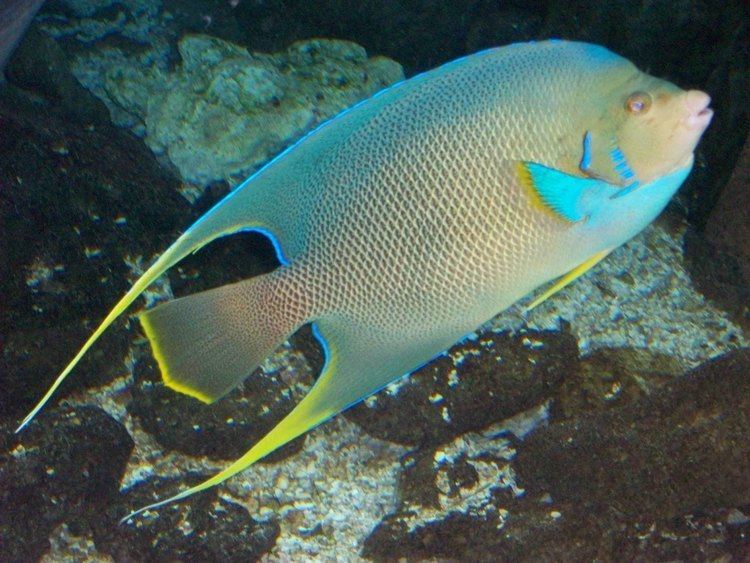Kingdom Animalia Order Perciformes Genus Holacanthus Higher classification Pomacanthus | Phylum Chordata Family Pomacanthidae Scientific name Holacanthus bermudensis Rank Species | |
 | ||
Similar Queen angelfish, Holacanthus, Pomacanthidae, Pomacanthus, Gray angelfish | ||
The Bermuda blue angelfish, Holacanthus bermudensis, usually called just Blue Angelfish, is a species of marine angelfish of the family Pomacanthidae. Holocanthus bermudensis should not be confused with Holocanthus ciliaris, or queen angelfish, despite very similar appearances. They are two separate species.
Contents

Description

A Bermuda blue angelfish is blue-brown in color with green hues and bright yellow on the tip of its tail and fins. Their young, however, have a completely different coloration. A young blue angelfish is dark blue with a yellow tail and some yellow on its fins. It also has vertical blue bars on its body. As it ages, the bars fade away and the body color becomes lighter and some browns and greens are added.

The Bermuda blue angelfish can grow up to 18 inches in length. It has a large mouth and comb-like teeth. It is often collected for aquariums. This fish occasionally breeds with the queen angelfish, which is very similar to it. This hybrid is called the townsend angelfish. An adult blue angelfish can produce a loud thumping sound that warns predators and also startles divers.
Habitat

It is found in the western Atlantic from North Carolina to Bermuda, intothe Bahamas and Florida to the Gulf of Mexico, and also to Yucatan, Mexico.
The Bermuda blue angelfish tends to stay near rocks, coral, and sponges at depths of between 6½ and 300 feet (2–92 m). It also lives around boulders, in caves, and crevices in shallow water. Young blue angelfish tend to live in bays and channels.
Diet
The Bermuda blue angelfish feeds primarily on sponges, but also feeds on tunicates, jellyfish, and corals as well as plankton and algae. Young blue angelfish eat parasites on other fish at "cleaning stations". Also 95% of their diet consists on sponges. Although in home aquariums, aquarists have been successful in providing the Queen Angelfish a diet of meaty and algae based foods.
Reproduction
The Bermuda blue angelfish has no specific breeding period, so they breed year round. When they do breed, the female can release from 25 to 75 thousand eggs each day, totaling up to 10 million eggs each breeding cycle. The eggs are transparent and contain a drop of oil for buoyancy. The eggs hatch shortly after, and the fish that emerge are in a pre-larva state and they do not have guts, eyes, or fins, and are attached to a yolk sac. After two days, the yolk sac is gone and the fish are in a larva state and eat plankton. These fish grow very fast.
Lifespan
The Bermuda blue angelfish can live up to 20 years.
Status
This species is not endangered.
Distribution
The Bermuda blue angelfish ranges along the Tropical Eastern Atlantic, common in Florida, and rarer further south in the Caribbean.
In the aquarium
Although, the Bermuda blue angelfish is considered to be moderate in difficulty to keep in captivity, it is ill-suited for the inexperienced aquarist. They are an aggressive species that require a large aquarium. Most aquarists recommend a minimum tank size anywhere from 150 on up to 180 gallons. The Bermuda blue angelfish will harass other fish without discrimination, particularly new additions to the aquarium. It should be the last fish added to any system. It is not a reef safe fish, and larger specimens may nip at or consume corals, particularly stony or soft ones, and ornamental invertebrates.
